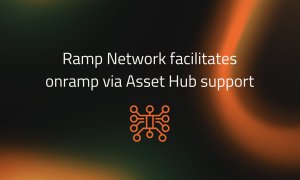ESMA’s CFD rulings and the importance of American IBs – FinanceFeeds Insight
ESMA’s rulings for European brokerages are an emulation of the US six years ago. Brokerages are reliant on IBs, and this structure is vital, however staying compliant and using proper IBs is now a massive reality. In America, IBs need to be NFA regulated and have ‘trained’ their high quality client bases to expect sustainable trading environments. Time to explore relationships with American IBs? We think so.

Almost a week has passed since the European Securities and Markets Authority (ESMA) dropped its latest bombshell onto the retail FX and CFD industry.
Whilst the passing of such a ruling has created a tremendous furore within the entire electronic trading community worldwide among both brokerages and traders, it is important to take stock and consider the dynamics and implications of ESMA’s proposals.
Six days ago, FinanceFeeds reported that under the new rulings, leverage for CFDs will vary from 2x to 30x depending on the underlying, with the strictest leverage cap to be applied to cryptocurrency CFDs.
The ensuing reaction from within the retail FX business across the world was as variable as expected, with Britain’s long established and finely honed giants having maintained their commercial composure, having anticipated this measure for some time and prepared for it with the usual aplomb expected from companies with market capitalization figures well into the hundreds of million and public listings on London’s prestigious stock exchange.
Small to medium sized companies whose customer bases do not consist of loyal domestic market clientele with a mindset as measured and conservative as the companies which provide the trading environment reacted somewhat differently, largely due to the need to provide trading conditions to retail customers in less developed regions of the world that would make a Westerner wince, largely due to the self-created situation that many MetaTrader 4 brokerages now find themselves in.
That situation being the creation of overtly non-compliant trading conditions, often offered by offshore entities rather than their sister companies in Cyprus which is used to market a CySec license and therefore European regulatory environments, when the reality is massive leverage and a profit sharing model, derived largely from the difficulty in differentiating one brokerage from another when so many are taking completely off the shelf trading solutions from one dominant trading platform firm.
The recycling of customer databases from one broker to another due to the ease of onboarding clients to MetaTrader 4 platforms with the same trading conditions arose many years ago and still prevails today, and the non-development of proprietary platforms and in-house systems in favor of what appeared to be a cheap and easy solution has now resulted in a race to the bottom and a marketplace where customers in developing regions have been ‘trained’ to demand high leverage and casino-style absurdities such as bonuses.
Another important matter to consider with regard to ESMA’s rulings is that many smaller brokerages are utterly dependent on local introducing brokers (IBs) in developing markets.
Often, the way the relationships are structured between IB, broker and client represent a conflict of interest, as depicted in a conversation between FinanceFeeds and an IB with 30 years experience recently, in this in-depth discussion.
The rulings by ESMA will likely confirm the opinion of many senior executives that FinanceFeeds has discussed this with during the past two years, that being the concern (and now reality) that brokerages under US and EU regulatory structures will not be able to supervise unregulated IBs in third country jurisdictions, hence it will become a regulatory minefield to report to the competent authorities when clients are being referred to brokers by third country IBs and, even more important, when the IBs are trading their accounts for them without a portfolio management license.
Many IBs mark up spreads, share commissions and promise vast returns to their clients, and are often based outside of Europe or North America, hence regulatory adherence by brokers who onboard clients via such IBs will become impossible.
Indeed, Chinese IBs that bring clients to a China-based division of a Western firm will be absolutely fine – this is the correct way to structure a business, but a firm based in Europe which brings clients from affiliate marketing efforts without having any relationship with the referral source or the client, or who onboards customers via dubious MLM entities will have questions to answer.
This may well pave an important route back to North America.
IBs are a critical component in retail FX brokerages, as the relationship between a proper, well run IB and its clients is absolutely personal, thus it is the same as having a local representative without the associated costs and operational disadvantages, yet it reduces internal costs too by maintaining a relationship with one good quality IB rather than attempting to onboard unknown direct clients one by one which has become a completely impossible and unfeasible exercise for smaller to medium sized firms.
Two years ago, during a meeting with Drew Niv, at the time CEO of FXCM at the company’s offices in New York, Mr Niv explained that FXCM had cut the majority of its IB relationships and focused on direct business and affiliate networks, largely due to the considerations brought about by the inability to supervise non-NFA regulated IBs which were based in regions of the world where FXCM had no office and no license.
This has now become a valid concern and it may well be time to reconsider striking up relationships with the small number of long-standing NFA-regulated North American IBs that are not only still in business, but thriving and working with very high quality customers.
Unlike IBs in other regions, those operating in the United States require to be registered with the NFA as an IB, and the principal of the IB business requires himself to hold an NFA license, and the company itself requires an NFA license too.
IBs have to maintain a minimum capital adequacy requirement of $45,000, which is unheard of in any other region, and they are subject to continual compliance inspections by the NFA, just as a brokerage would be.
Speaking recently to Justin Hertzberg, CEO of Forest Park FX in Boca Raton Florida recently, FinanceFeeds looked at how IBs in North America are far removed from those elsewhere.
“As the principal of an NFA registered, independent introducing brokerage firm, I know firsthand the hoops firms need to jump through to remain in compliance with US regulations. There are stringent net capital requirements, cash activity restrictions, promotional material limitations, AML policies, and procedures that need to be followed to address nearly every CFTC and NFA rule, bylaw and interpretive notice thereon” he explained.
“Making sure I am operating within regulation can (and does) keep me up at night. And for many RFEDs and IBs, it has proven to be too much – with well known (and equally well regarded) firms closing their doors, selling their books and/or moving to less regulated jurisdictions in recent years. Each time this happens, I lament that the lack of RFEDs left in the U.S. is bad for the industry – and I did it again when TradeKing, a guaranteed IB of Gain Capital/Forex.com, announced its acquisition of MB Trading two and a half years ago. Why? Because fewer brokers mean less competition. And less competition means potentially higher costs of trading and a ‘take it or leave it’ attitude. Moreover, as an IB in the industry, fewer brokers also means that my firm has one less option to offer its clients.”
Mr. Hertzberg then turned to the subject of analyzing which firms left, compared to those who stayed and eventually reaped the rewards “But if I am being fair and objective, the firms that have left the industry were the weaker ones. They were firms which did not have the capital or the internal controls or the wherewithal to adhere to the rules and regulations to which we are all subject.”
In some sense it is a survival of the most compliant. And the firms that remain have a strong commitment to compliance…and that is never a bad thing for the industry or traders. In a world where non-US brokers routinely claw back profits, delay withdrawals, or manipulate client executions, the RFEDs which remain seemingly take the high road – and the lumps – when they encounter sharp flow, profitable traders and large withdrawals.” – Justin Hertzberg, CEO, Forest Park FX
This dialog highlights the absolute alignment in terms of business practice and considerations that have to be looked at on a daily basis between IB and brokerage, and therefore with the ESMA rulings having now created an environment that somewhat emulates that of the US, relationships with IBs that are subject to licensing, and have quality client bases that are used to properly gauged trading terms and whose accounts are being placed with high quality brokerages may be the right way forward.
As the previous decade drew to a close, many retail FX firms with their origins outside of the United States began to weigh up the viability of retaining business here.
The result was a wave of exits from the United States at the turn of this decade by major firms including Alpari, FXSolutions, GFT, IBFX, and ILQ to name a few, as well as vast consolidation with FXCM having bought the client bases of various firms, and GAIN Capital acquiring GFT, meaning that in the space of just three years between 2010 and 2013, the approximately 25 retail OTC FX firms that had operated in America became nine.
Now, it is quite simply dominated by just two domestic companies.
Five years ago, much clamor amassed and it was relatively common to hear conversations by industry executives outside North America as well as those on the retail sales side such as introducing brokers beginning to hail America’s FX business as a dead man walking.
How wrong could this be….
When examining the companies that took the option of leaving the US market post-Dodd Frank Act, they mostly no longer exist anywhere globally. ILQ left the US market with the NFA having administered a $225000 fine and a permanent ban from operating in the Federal United States in July 2014.
One of the main factors which prompted the NFA to probe into the commercial activities of ILQ at the time was that the regulator had serious concerns relating to the corporate structure of the company, as well as the NFA having conducted investigations into the provenance and business activities of a number of the company’s key figures, including the assertion that at the time that the NFA’s investigation began in March 2013, ILQ had approximately 1,300 customer accounts and over $13 million in total customer liabilities.
Nowadays, the firm has a small operation in Australia but is living in the shadows of Invast Global or AxiTrader, both of which have branched into Prime of Prime brokerage, as well as embarked on large scale commercial growth endeavors.
IBFX was banned from the US market in March 2016. The company, which is owned by Japanese giant MONEX Group, was fined $1 million by the CFTC a day before its ban, and OANDA Corporation then acquired its client base that were using the proprietary Tradestation platform – around 2200 traders – and migrated them to OANDA’s fxTrade system.
Previously, IBFX was fined $600,000 as a result of the NFA having found that IBFX used two models to execute its retail FX transactions. One was STP, and the other being a practice known as warehousing.
Warehousing occured whereby IBFX acted as the counterparty for trades whose value was less than the notional volume threshold level lnterbank had established for STP trades. Interbank would aggregate the “warehoused” trades for risk management purposes and earn revenue from the bid/ask spread and from beneficial market moves that the aggregated “warehoused” trades experienced.
For the vast majority of trades, IBFX would warehouse the trades, and for the remainder of trades, IBFX used the STP model, which accounted for a very small percentage of the firm’s trading volume and applied when the contract size was at or over the specific notional volume threshold set by the firm for its warehouse trades.
Under the STP model, after a customer clicked on the bid or offer price, which included lnterbank’s predefined markup, IBFX would fill the customer’s order but only after the firm had filled the offsetting position (contra-fill) with a liquidity provider.
Less than two years later, IBFX sold its MetaTrader 4 client base to FXCM for $4.4 million, before this year leaving the US altogether.
Strength and business ethic in the land of the free
Capitalization and execution are cornerstones of the American FX industry’s pedigree and quite simply, time has shown that those that cannot cut it in America, have been unable to do so throughout their business operations anywhere globally.
With this level of stringency, and the resultant high expectations of the quality client base that such an environment has engendered, it may well be time to consider how to benefit from operating with IBs in America on a global scale.









